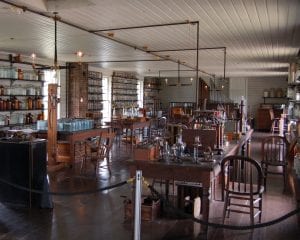Creativity is often defined as invention. Eg. Margaret Boden’s general definition in The Creative Mind is that it is ‘the ability to come up with ideas or artefacts that are new, surprising and valuable’. The image of a lightbulb appearing above a person’s head is a widespread representation of this moment of invention. (Today we’d call it a ‘meme’ after the ‘invention’ of that concept by Richard Dawkins).

The lightbulb was itself an invention of major significance, that is widely held to be incredibly valuable. So the common meme of creativity today points to a path connecting mental activity to modern, technological, artefact production. Idea — artefact, new, surprising, and valuable. The legendary Thomas Edison is commonly associated with it as its inventor, but this is not accurate. Edison did what he did so well, which was improve upon earlier versions of technological innovations so that his lightbulb became the most efficient and reliable and so the first really commercially successful one.
When I say Edison here, I really should say Edison’s corporation. Through his business he was able to fund and establish the Edison Laboratory which was a prototype for what became the corporate R&D division of modern industrial technology firms. In an important way, Edison’s marshalling of capital, knowledge sources (like scientific and tech journals), expert personnel, experimental fabrication and testing facilities, with legal (patenting), marketing, promotion and other commercialisation skills and ‘human resources’ was the ‘creativity’ underpinning what became the (self-driven) legend of the ‘Wizard of Menlo Park’.

Dearborn, Michigan
(By Andrew Balet – Own work, CC BY-SA 2.5, https://commons.wikimedia.org/w/index.php?curid=965433)
The lightbulb image emphasises the idea of the birth of the brilliant idea from the moment of inventive genius. It is a clever updating for technological times of the ‘spark of inspiration’, the gift from the gods as the heart of creativity. For the early modern philosopher Immanuel Kant, human creativity (for eg. of the poet or the painter) was an innate potential deriving from our closeness to the Divine; it was an imitation of God’s superior creativity visible in the manifold diversity and complexity of the natural order.
When you consider the lightbulb from this historical perspective, as a technological invention, the creativity looks less like wizardry and more like a moment in a process involving different actors and elements. It is a mixture of ideas and artefacts, of structures and the choices they make possible, of money, materials, other people and internal, individual, thoughts, dreams and desires.
Invention means ‘in-coming’. The sense of the new, and the surprising that Boden uses for creativity resonates with this idea of something coming in from an outside, unnoticed place. This locates the creator in this outside place. And that is certainly how creativity works when it works: it comes in and changes what was known, normal, routine; it is exactly what is not expected. As a process however, what the tale of the lightbulb suggests is that perhaps we should not be satisfied with the modernised fairytale about the magic inspiration for this in-coming. Especially if we are interested in nurturing creativity, in nudging it towards a particular kind of value and away from another (eg. toward social cohesion or improved opportunity or quality of life and away from maximising shareholder return as the criterion). More on this to come.

